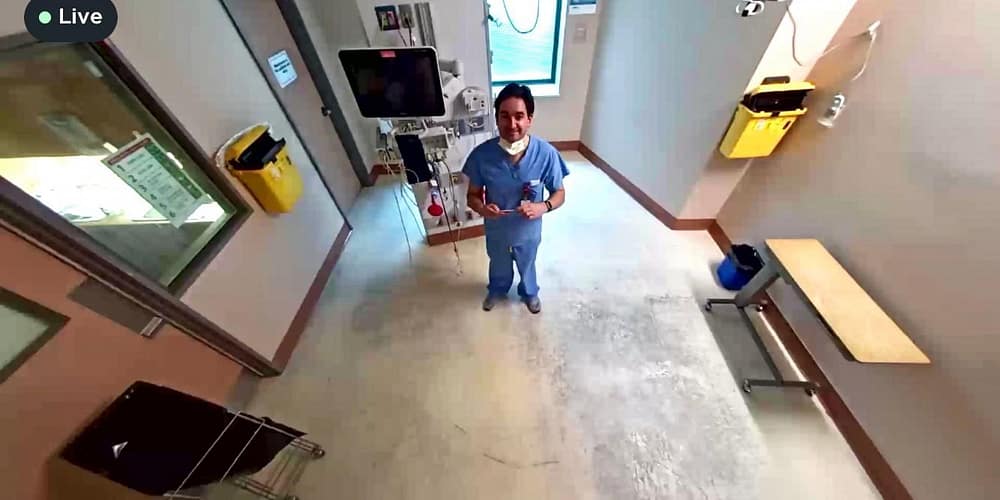Exploring the Role of Security Cameras in Medical Offices: Safeguarding Patient Care and Privacy

In today’s public landscape, security cameras have become ubiquitous. However, when it comes to medical offices, the question arises: do these surveillance systems have a place within healthcare facilities? This article aims to provide a comprehensive overview of the issues associated with installing video cameras in medical offices, along with a framework to help you determine whether such surveillance is appropriate for your practice.
Understanding Diverse Perspectives: Attitudes towards video surveillance vary widely. While some individuals perceive it as a breach of their privacy, others find delight in sharing videos on social media platforms. Regardless of personal opinions, it is widely recognized that security cameras can effectively prevent unsafe incidents, and the significance of office safety is universally acknowledged by patients, doctors, and staff.
Legal Considerations: While there are no specific federal laws outlining the exact usage, placement, and methodology of safety video surveillance in medical offices, California law states that cameras cannot be utilized in areas where individuals have a “reasonable expectation of privacy.” However, it does not explicitly address medical offices. Furthermore, the California Medical Board, California Medical Association, and American Medical Association have not published official positions regarding office security cameras. Consequently, physicians must carefully balance their efforts to create a secure environment with the obligation to protect Protected Health Information (PHI) in accordance with HIPAA and other applicable laws. So, where should one begin? The ideal starting point is to establish a written policy. Below are key elements to include in such a policy:
Key Elements for a Security Camera Policy:
- Purpose: Clearly define the legitimate purpose behind implementing a security camera system. Presumably, it is primarily aimed at ensuring the safety and security of patients, staff, and physicians.
- Locations: Ensure that security cameras are placed in visible positions, rather than concealed, and restrict their usage to “public” or common areas, such as waiting rooms. Cameras should not be installed in areas where individuals have a reasonable expectation of privacy, including exam rooms and bathrooms. Hallways may present challenges due to the potential risk of inadvertently capturing views of sensitive information. Therefore, cameras should be positioned strategically to avoid capturing Protected Health Information (PHI), such as patient charts or computer screens.
- Employee Awareness: It is crucial to inform employees about the presence of security cameras. Consider having employees sign an acknowledgment form, particularly if cameras are installed in employee work areas, such as nurses’ stations, where some expectations of privacy might exist. However, it is important to refrain from placing cameras in employee lunch or break rooms.
- Audio: Understand that audio surveillance is deemed as eavesdropping and may violate California Penal Code 632. Consequently, the security system should not include audio recording capabilities.
- Postings and Notifications: Display clear signage indicating the presence of nearby security cameras. This discourages any claims that an individual reasonably expected the area to be private and reinforces the legitimate purpose of ensuring safety. If more than five percent of your patient population speaks a language other than English, make sure the signage is also provided in that language.
- Archiving: To align with the safety objectives of video surveillance, it is likely that video files will not need to be retained for an extended period. Frequently, safety-oriented videos are either overwritten or regularly purged. Develop a plan for managing footage that captures incidents. Determine who will be responsible for system administration, who will have access to the files, and under what circumstances.
- Security: Ensure that the security camera system is physically secure, such as by storing it in a locked cabinet, and digitally secure, such as by implementing password protection measures.
- Privacy Considerations: A patient’s visit to a doctor’s office falls under the purview of PHI and is subject to HIPAA regulations. Therefore, in the event of an incident, the identities and images of innocent bystanders must be protected to uphold privacy requirements.
When contemplating the integration of security cameras in medical offices, careful consideration of various factors is crucial. By establishing a well-defined policy that addresses purpose, locations, employee awareness, audio restrictions, notifications, archiving, security measures, and privacy considerations, medical professionals can strike a balance between ensuring a safe environment and upholding patient privacy rights.